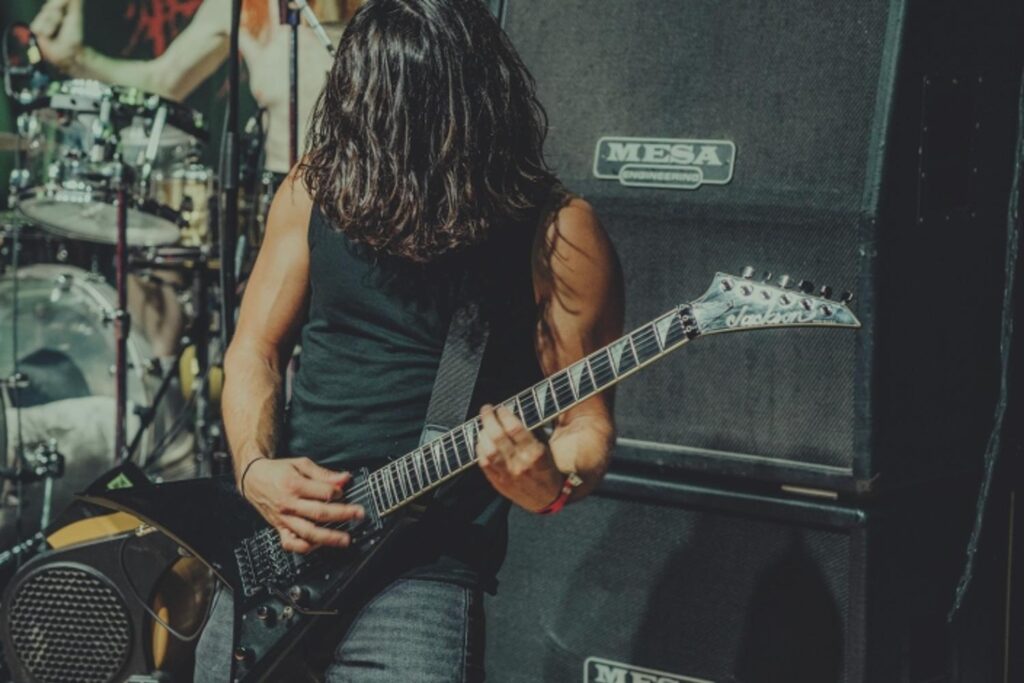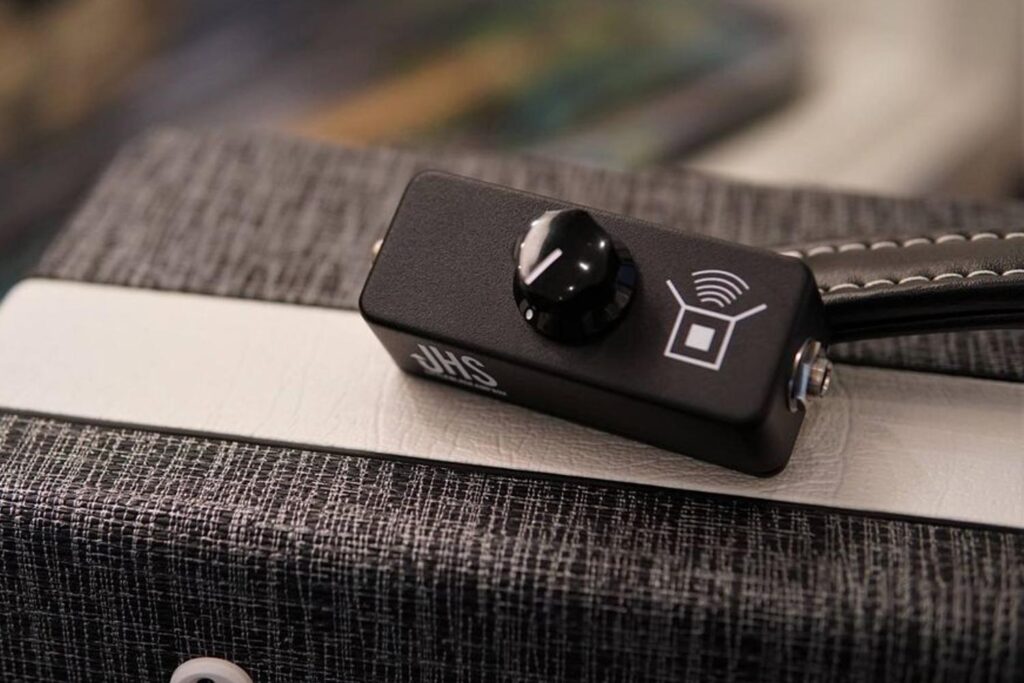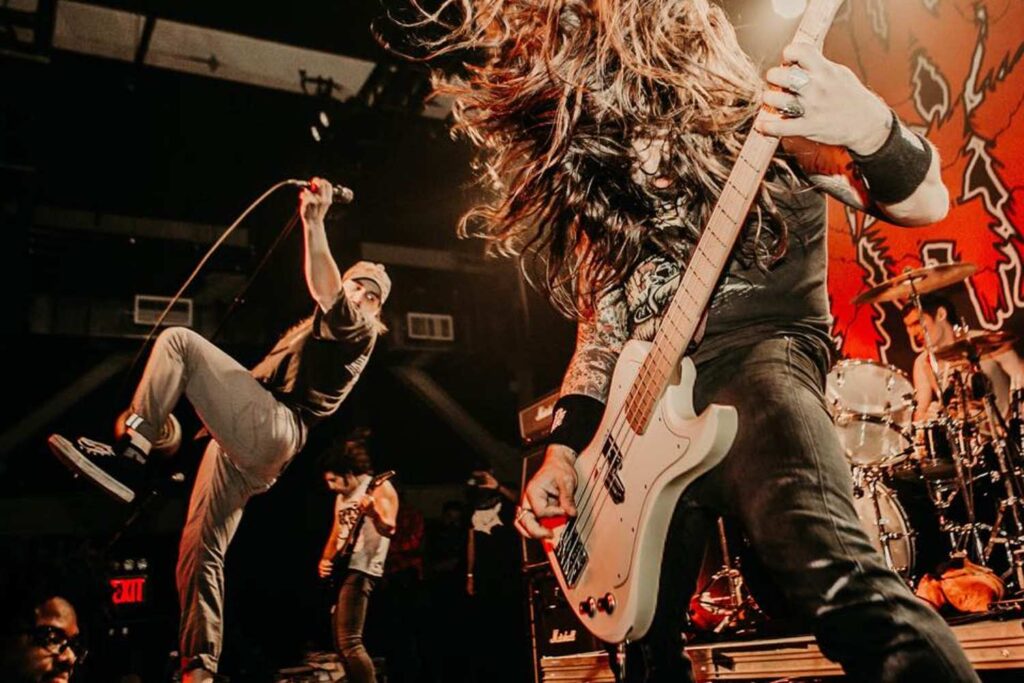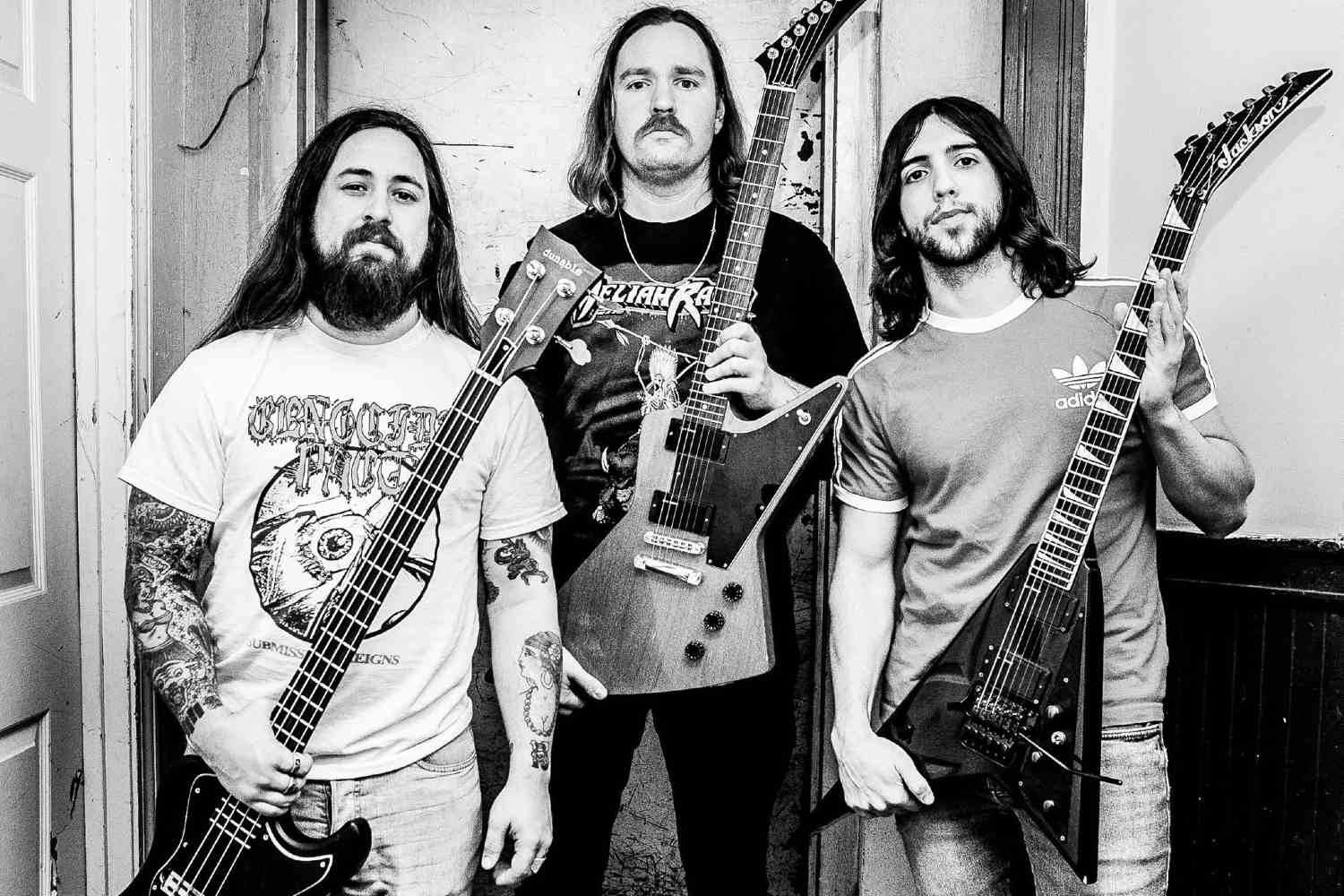Power Trip were set to take over the world.
They formed in Dallas in 2008, and a slow build preceded the meteoric rise that would take place after the release of their sophomore record Nightmare Logic, an album that catapulted them into the international scene. Produced by Arthur Rizk, whose credits include Death Angel, Kreator, Code Orange and Trapped Under Ice, Nightmare Logic solidified the band as one to watch in extreme music.
Rubbing shoulders with some of the biggest names in metal, and coupled with their ferocious live energy, Power Trip brought new life to a sometimes stale metal scene. All of this came to a grinding halt in 2020, when singer Riley Gale died of an accidental overdose of fentanyl. While the future of the band hangs in the balance, the legacy of riffs, tone and magical live performances from guitarist’s Blake Ibanez and Nick Stewart can’t be denied, while bass player Chris Whetzel holds down the bottom end on bass guitar.
Read up on all the latest features and columns here.
Blake Ibanez guitars
Jackson USA RR1
Blake’s main squeeze has been a USA-made RR1 from Jackson. The RR1 is the standard Rhoads USA made guitar, and while varying numbers from RR1 to RR5 denote different neck constructions and wood types, the RR1 is an alder neck-through design with a maple neck. Blake’s has a Floyd Rose bridge, and the original humbuckers have been replaced with Lace Drop & Gain pickups.

This combination makes Blake’s RR1 a lethal lead machine, the Lace pickups helping it to cut through, while retaining the boisterous punch required for switching between wailing leads and rock-solid rhythms of Power Trip’s music.
Marshall JCM800 2203
Blake amplifies his Jackson through a Marshall JCM800 2203 head, colloquially known as a ‘JCM’ or just ‘800’. The JCM is a single channel, with just a preamp control, Master volume and simple EQ, which he describes as “unforgiving” in that the clarity of it makes him a better guitar player.

Nick Stewart guitars
Gibson Explorer
The other side of the stage is occupied by Nick Stewart, Power Trip’s rhythm guitarist. Often armed with a Gibson Explorer, finished in aged natural because of a love for the (mind meltingly expensive) Korina models of the late 50s. He also has a black Explorer that was damaged in a car accident.
Explorers are unique in that they’re built from mahogany, though the angular body shape gives them more clarity and a more modern feel than the Les Paul or SG.
Stewart’s Explorers are also upgraded with Lace Drop & Gain, the humbuckers, optimised for “heavy, high-gain music that requires drop tunings” helping him to anchor the band, despite Power Trip playing in E Standard.
ESP E-II M-1
Nick Stewart has also played an ESP E-II M-1, a workhorse design featuring an ebony fretboard and single bridge humbucker, an EMG 81. E-II are made in Japan along with ESP standard models, so they’re masterfully crafted. The alder body and maple neck’s sonics match Blake’s Jackson more cohesively.

ENGL E650 Ritchie Blackmore
Nick’s focus is rhythm playing, so he goes for something with a bit more heft than Blake’s Marshall. The E650 is a dual-channel tube head, again with very simple controls, and presence controls that are familiar to Stewart after he played a Peavey 5150 for years.
Stewart’s E650 was re-tubed and re-biased, coming back from the shop hotter and louder than ever, so he uses a JHS Little Black Box to tame that.
JHS Little Black Box
The JHS Little Black Box is a volume utility box that is inserted into your amp’s effects loop. This intercepts the signal between pre-amp and power amplifier (i.e. you can push your pre-amp into drive, then shape with EQ) before controlling how much sound is actually hitting the power amp stage and therefore being amplified.

Nick Stewart uses the Little Black Box to allow his ENGL to be used at more manageable volumes, as even the lowest volumes was too much for some venues Power Trip would play.
Chris Whetzel Bass
Holding down the bottom end is Chris Whetzel, more often than not with a Dunable bass. Whetzel played an Ibanez Challenger bass, their take on a Precision bass, for sometime before it fell out the back of a touring van (the same accident that damaged Nick Stewart’s black Explorer).
Dunable R2 Bass
The Dunable R2 is their offset, vaguely Explorer-style shape. Dunable are entirely customisable, but Whetzel’s original R2 was finished in a deep, dark burst with a Lace pickups Aluma P Bass pickups installed to mimic a traditional P-Bass style split single coil pickup.
He now has a second, finished in a vintage white with a mint green guard to replace his Ibanez Challenger that was finished in vintage white. The white R2 has the same Lace Aluma P Bass pickups as his original!

Ampeg SVT-7 Pro
Wherever possible, Whetzel uses a Ampeg SVT-7 Pro because of, like his bandmates, the simplicity of the layout speaks to him. The SVT-7 Pro is a 1000W solid state amplifier, and he’s running a BBE Sonic Maximiser 482i in its effects loop.
Sonic Maximiser 482i
The Sonic Maximiser 482i is, for lack of a better word, a sonic enhancer. While that seems to be a broad, sweeping statement, so is the effect of the 482i. The Sonic Maximiser is loosely based on the Aphex Aural Exciter, and it enhances low end, while harmonically adding high end. It’s not as simple as an EQ, and it’s not strictly a dynamic processor, it brightens and deepens sound. This is exactly why Chris Whetzel uses his 482i for Power Trip extended the bottom end of his bass, while adding clarity to his string attack to help articulation for fast riffs.

Keep up with Power Trip here.







